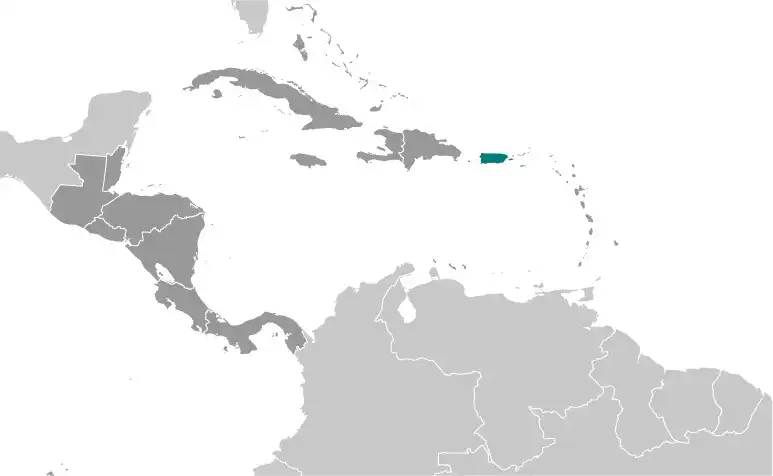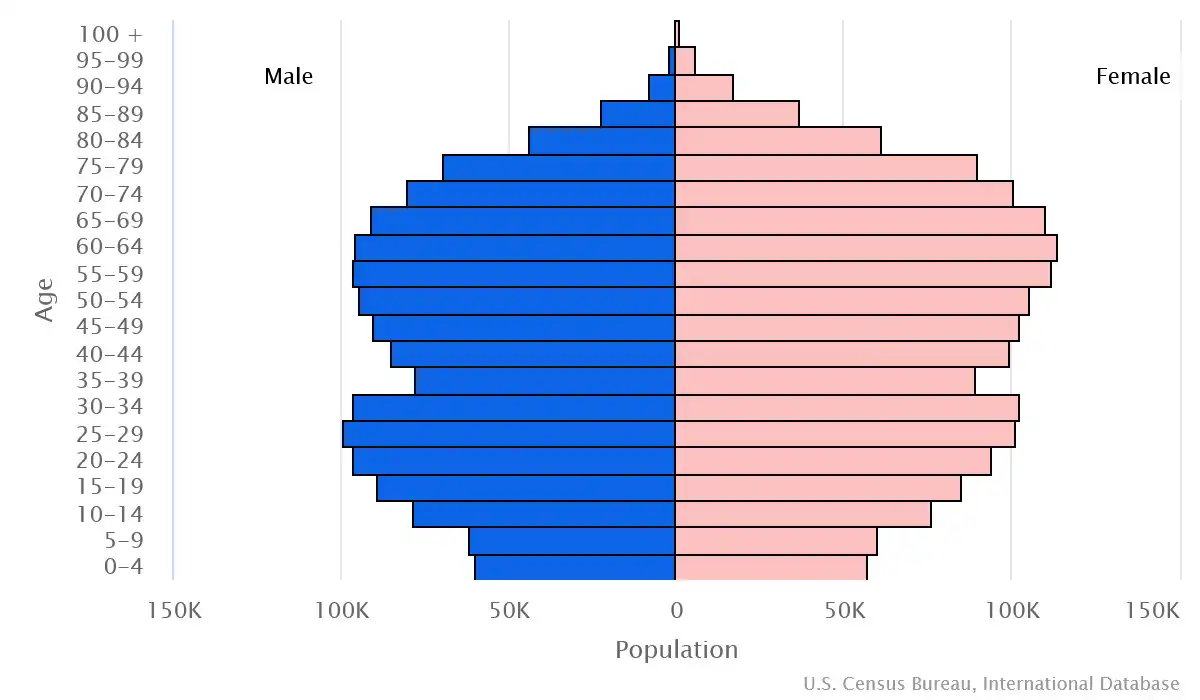
Puerto Rico
Veröffentlicht: 20. June 2022 - Letztes Update: 28. February 2025
Country Data Dashboard

Population
3,019,450
Growth: -1.2% (2024 est.)
GDP
$117.902 billion
(2023 est.)
Area
9,104 sq km
| Government type: | unincorporated organized territory of the US with local self-government; republican form of territorial government with separate executive, legislative, and judicial branches; note - reference Puerto Rican Federal Relations Act, 2 March 1917, as amended by Public Law 600, 3 July 1950 |
| Capital: | San Juan |
| Languages: | Spanish, English |
People & Society
Ethnicity (2010 est.)
Religion (2014 est.)
Age structure

Economy
Economic overview
US Caribbean island territorial economy; hit hard by COVID-19 and hurricanes; declining labor force and job growth after a decade of continuous recession; capital-based industry and tourism; high poverty; energy import-dependent
Real GDP (purchasing power parity) in Billion $
Real GDP per capita in $
Exports & Imports in billion $
Top 5 Import Partner in 2019 (60%)
Top 5 Import Commodities in 2019
- nitrogen compounds 💨
- sulfur compounds 🧪
- refined petroleum ⛽
- medical cultures/vaccines 💉
- cars 🚗
Top 5 Export Partner in 2019 (60%)
Top 5 Export Commodities in 2019
- packaged medicines 💊
- medical cultures/vaccines 💉
- hormones 💉
- orthopedic and medical appliances 🦽
- sulfur compounds 🧪
Geography
Map

Area
Natural resources
- some copper and nickel; potential for onshore and offshore oil 🛢️
Climate
tropical marine, mild; little seasonal temperature variation
Historical Background Information
Populated for centuries by aboriginal peoples, Puerto Rico was claimed by the Spanish Crown in 1493 after Christopher COLUMBUS' second voyage to the Americas. In 1898, after 400 years of colonial rule that saw the indigenous population nearly exterminated and African slave labor introduced, Puerto Rico was ceded to the US as a result of the Spanish-American War. Puerto Ricans were granted US citizenship in 1917. Popularly elected governors have served since 1948. In 1952, a constitution was enacted that provided for internal self-government. In plebiscites held in 1967, 1993, and 1998, voters chose not to alter the existing political status with the US, but the results of a 2012 vote left open the possibility of American statehood. A referendum held in late 2020 showed a narrow preference for statehood.
Economic recession on the island has led to a net population loss since about 2005, as large numbers of residents moved to the US mainland. In 2017, Hurricane Maria was the worst storm to hit the island in eight decades, and damage was estimated in the tens of billions of dollars.
Economic recession on the island has led to a net population loss since about 2005, as large numbers of residents moved to the US mainland. In 2017, Hurricane Maria was the worst storm to hit the island in eight decades, and damage was estimated in the tens of billions of dollars.
